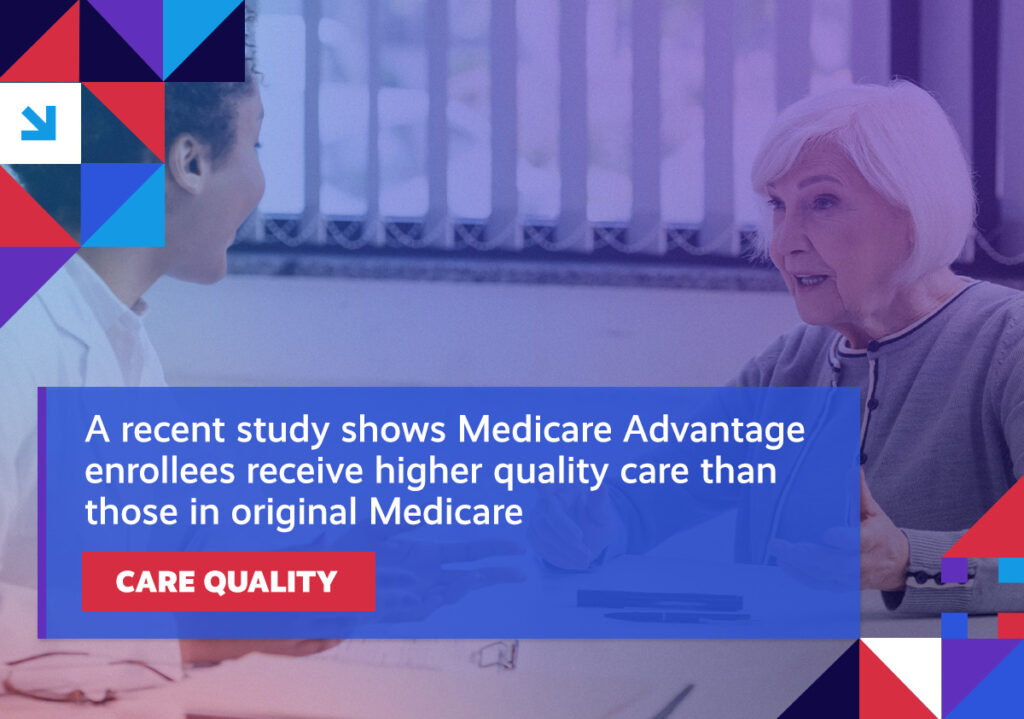A quick roundup of the issues driving the healthcare reform conversation.

Week in Review
MEDICARE ADVANTAGE Lawmakers defend Medicare Advantage.
Quick takeaway: A group of 16 members from the U.S. House of Representatives sent a letter to the Centers for Medicare & Medicaid Services (CMS) urging the agency to protect Medicare Advantage (MA), given the program’s critical role to an increasingly diverse population.
Digging deeper: In the letter, driven by Reps. Darren Soto (Florida), Steven Horsford (Nevada), and Ami Bera (California), the Representatives note that MA has helped to dismantle barriers to high-quality care for diverse populations, including the approximately 54 percent of Medicare beneficiaries from African American, Latino, and Asian Pacific Islander communities who choose MA plans.
What it means: Late last month, CMS proposed its latest changes to how the MA program is administered and funded, continuing a pattern that, in recent years, has chipped away at what’s made MA so much more effective and popular than original Medicare.
PATENT ABUSE Big Pharma’s continued abuse of the patent system drives up healthcare costs for everyone.
Quick takeaway: By manipulating the patent system, pharmaceutical manufacturers are able to stymie generic competition and keep their prices artificially high.
Digging deeper: As previously covered, drugmakers have already raised prices on hundreds of products to start the year – 910, by last count, at an average of 5 percent. In fact, between 2011 and 2021, annual spending on prescription drugs in this country jumped 64 percent, from $366 billion to $603 billion.
Given this alarming trajectory, greater attention is being paid to what’s driving prices – namely, patent abuse.
What it means: Drugmakers have become experts in obtaining patents that fail to advance new drugs or new innovations for existing products. This type of patent abuse forces patients to wait years – sometimes even decades – for less expensive, generic versions of pricey medicines to come to market. A recent analysis of the 12 bestselling drugs in the U.S. found that these drugs had an average of 74 patents, which meant patients had to wait 40 years before even being able to access generic alternatives.
CHARITY CARE Hospital charity care draws increased scrutiny.
Quick takeaway: The level of community benefits provided by nonprofit hospitals falls woefully short of their obligations.
Digging deeper: In exchange for their tax-exempt status, nonprofit hospitals are required to provide free or discounted healthcare or make investments in their communities. However, data has shown the value of the benefits these systems receive as a result of their tax exemptions far eclipses the amount of charity care they provide.
There are approximately 3,000 nonprofit hospitals in this country. And, as recently as 2020, these hospitals saved $28 billion in taxes, but only provided $16 billion in charity care.
What it means: Increasingly, most nonprofit hospitals no longer have local boards that can help direct community benefits. Owing to consolidation, many of them are now part of larger hospital chains. The fact that the Internal Revenue Service (IRS) doesn’t require these health systems to provide a minimum level of community benefits only compounds the issue.
But, states have turned their attention to the issue, increasing their oversight of nonprofit hospitals’ financial assistance policies.
For their part, federal lawmakers have also focused their legislative attention on cracking down on the tax-exempt status of nonprofit hospitals, increasing scrutiny of the level of charity care spending by these systems.
SOCIAL DRIVERS Medicaid explores a more holistic approach to beneficiaries’ overall health.
Quick takeaway: By broadening its focus to include social drivers of health, like housing, transportation, and food security, the Medicaid program is looking to better address health inequities and drive better health outcomes.
Digging deeper: Research has established that whole person health is driven by many factors. Separate and apart from medical-related issues, where someone lives, how they get around, and what kind of access they have to healthy foods, all contribute to a person’s health and well-being.
With that in mind, Medicaid administrators are working to enhance a programmatic focus on social drivers of health by giving states greater flexibility around what types of services they can include in their Medicaid programs.
What it means: A pilot program was just jointly announced by the Departments of Health and Human Services (HHS) and Housing and Urban Development (HUD) in which eight states, along with Washington, DC, were selected to participate in a new federal initiative known as the Housing and Services Partnership Accelerator. The program is aimed at helping states unlock federal resources to reduce homelessness by addressing health-related social needs.
Spotlight

| You can keep up with the latest by following the Health Action Network on X and by liking us on Facebook. And, be sure to check us out on LinkedIn, too. As always, let us know if there’s something you’d like to see covered in a future newsletter. |
The Health Action Network includes everyday Americans—families, workers, businesses, patients, providers, neighbors, and friends. We are working together because we support market-based solutions that offer better healthcare choices and help build a stronger economy. The Health Action Network is an Elevance Health, Inc., initiative.
